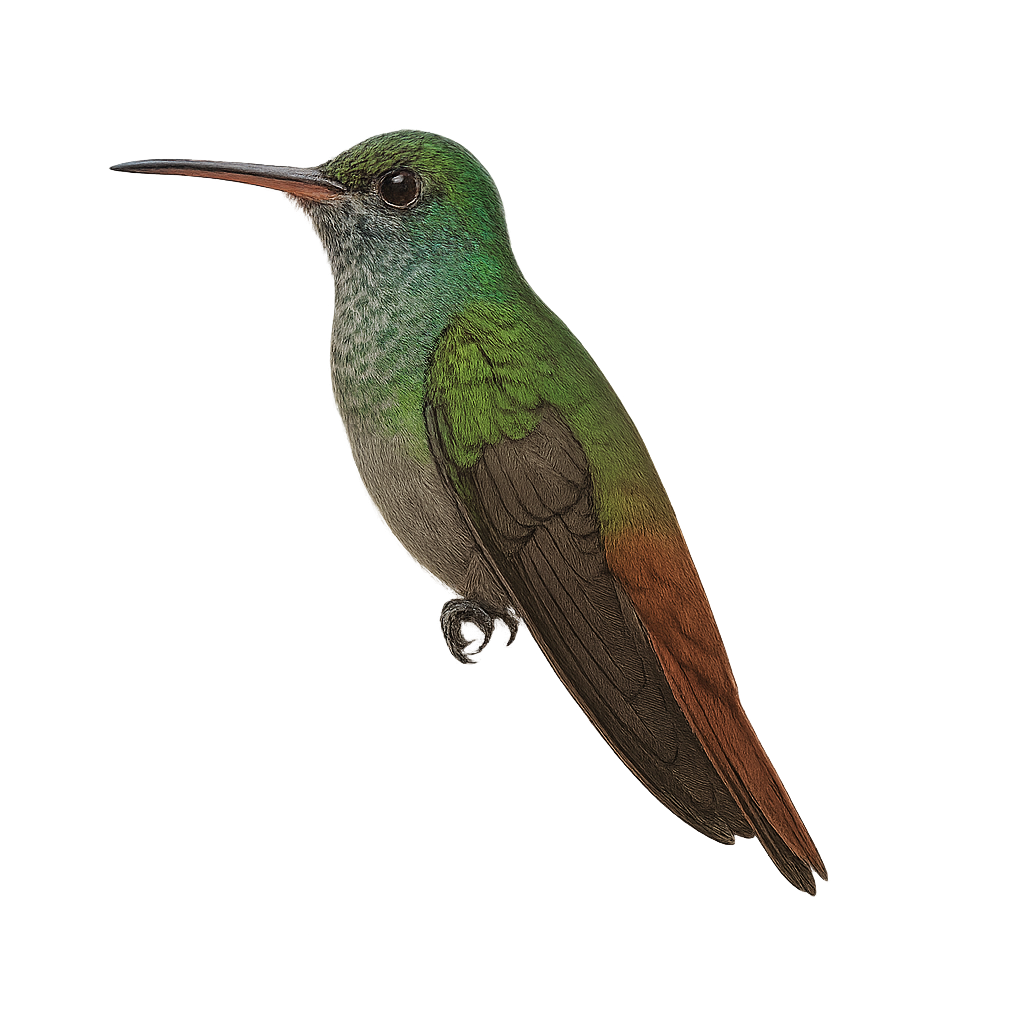Your wildlife photography guide.
Explore the rufous-tailed hummingbird in detail, study its behavior, prepare your shots.
Where to observe and photograph the rufous-tailed hummingbird in the wild
Learn where and when to spot the rufous-tailed hummingbird in the wild, how to identify the species based on distinctive features, and what natural environments it inhabits. The WildlifePhotographer app offers tailored photography tips that reflect the rufous-tailed hummingbird’s behavior, helping you capture better wildlife images. Explore the full species profile for key information including description, habitat, active periods, and approach techniques.
Rufous-tailed Hummingbird
Scientific name: Amazilia tzacatl

IUCN Status: Least Concern
Family: TROCHILIDAE
Group: Birds
Sensitivity to human approach: Suspicious
Minimum approach distance: 5 m
Courtship display: March to July
Incubation: 14-16 jours
Hatchings: March to August
Habitat:
Tropical forests, gardens, open wooded areas
Activity period :
Primarily active during the day, with peak activity in the morning and late afternoon.
Identification and description:
The Rufous-tailed Hummingbird, Amazilia tzacatl, is a medium-sized bird, measuring about 10 to 12 cm in length. It is easily recognizable by its bright green plumage on the back and head, contrasting with its characteristic rufous belly. Its bill is long and slightly curved, ideal for feeding on flower nectar. This hummingbird is mainly found in Central America and northern South America, where it inhabits tropical forests, gardens, and open wooded areas. It is known for its territorial behavior, aggressively defending its food sources against other hummingbirds. Despite its small size, it is an important pollinator in its natural habitat.
Recommended lens:
400 mm – adjust based on distance, desired framing (portrait or habitat), and approach conditions.
Photography tips:
To photograph the Rufous-tailed Hummingbird, it is advisable to use a telephoto lens of at least 400mm to capture precise details without disturbing the bird. Look for a spot where these hummingbirds frequently feed, such as near flowers or feeders. Be patient and discreet, as although they are suspicious, they often return to the same food sources. Use a tripod to stabilize your camera and adjust the shutter speed to freeze the rapid movement of their wings.
The WildlifePhotographer App is coming soon!
Be the first to explore the best nature spots, track rutting seasons, log your observations, and observe more wildlife.
Already 1 431 wildlife lovers subscribed worldwide

